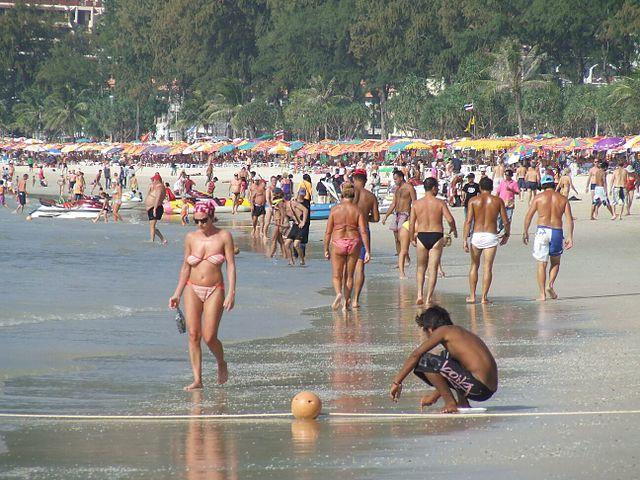
Several of Thailand's best known islands, including the spot made famous in the film “The Beach,” are closed indefinitely due to concerns of both damage from tourists and coral bleaching connected to climate change.
Part of this is a sustainability issue. Tourism is growing rapidly around the world, meaning that more and more people are visiting popular destinations such as Thailand -- which was the 10th most visited country in the world in 2014, according to the World Tourism Organization, with more than 26 million tourists visiting the Southeast Asian nation. That is a staggering increase of 24 percent from 2013.
Unfortunately, tourists can have a negative impact on the environment, something that is plainly becoming a problem in Thailand. More visitors coming to the same beaches equals more trash and more erosion. The recent spate of people taking selfies with animals resulting in their deaths is a testament to the adverse impacts of tourism. In Thailand, the biggest problem was massive crowds.
Thon Thamrongnawasawat, deputy dean of the Faculty of Fisheries of Kasetsart University, told the Bangkok Post that there were sometimes well over 1,000 tourists on a beach on Koh Tachai that could hold up to 70 people, as well as tour boats and food stalls.“This caused the island to quickly deteriorate. If it's not closed now, we'll lose Koh Tachai permanently," he said.
In some places near the popular island destination Phuket, 80 percent of coral reefs are damaged due to too many people diving and not keeping a safe distance from these precious marine lifeforms. In other places, overcrowding of speedboats increased pollution and damaged fragile coastlines.
This is not inevitable, of course – ethical tourism can allow visitors to appreciate and enjoy a place, while preserving it for others to also enjoy. This is what helped countries like Costa Rica and Botswana preserve their natural environments in a way that allows people to enjoy the true beauty of nature.
There is another issue, of course: climate change, which is impacting every part of the world. If it is not tackled, it will result in the destruction of not only Thailand's pristine coastal environment, but also countless pieces of natural heritage around the world, no matter how few tourists come to visit. Coral bleaching, for example, is accentuating the impacts of tourism on Thailand's coral reefs.
What is happening in Thailand could be a sign of what's to come. It is a warning to us. We need to increase the viability of ethical, environmentally-friendly tourism -- both through good behavior and initiatives to ensure that impacts are mitigated on the ground. And we also must move forward on the Paris Agreement goals, ensure that warming stays below 1.5 degrees Celsius, and put more research and funding into how we can prevent climate impacts, such as coral bleaching.
Otherwise, tourism may drop -- not because people don't want to travel, but because there just aren't any beautiful places left to visit.
Photo Credit: Neitram via Wikimedia Commons

Nithin Coca is a freelance journalist who focuses on environmental, social, and economic issues around the world, with specific expertise in Southeast Asia.














